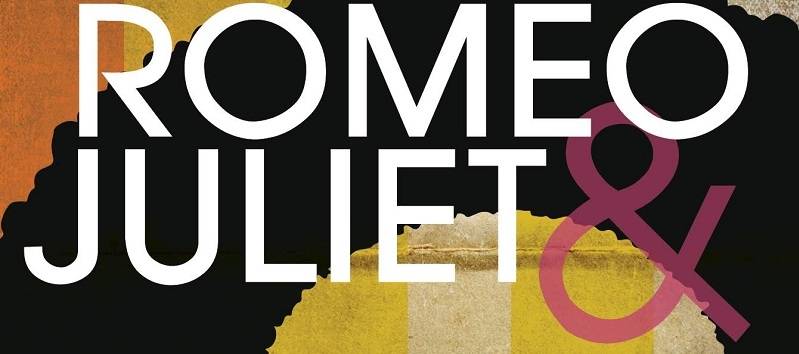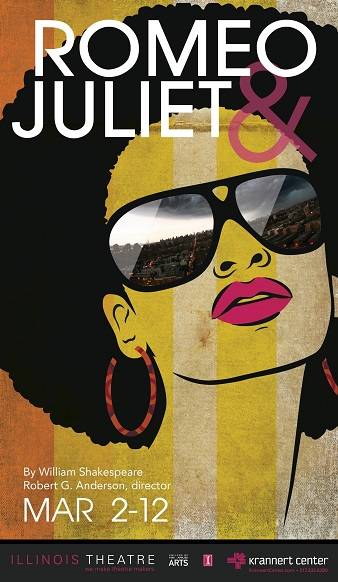
The tale of two star-crossed lovers in the fair city of Verona has been updated and changed several times over the years. The play has been set in a modern day Verona, given a happy ending, made into a ballet, and adapted by Baz Luhrmann (which got The Cardigans’ “Lovefool” stuck in our heads for weeks). Now the Krannert Center for the Performing Arts’ places the Montagues and Capulets in the City of Broad Shoulders.
 Rather than set the play during our current time, director Robert G. Anderson chose to explore the play’s themes and motifs in Chicago during the 1970s. Aside from disco and bell bottoms, Chicago of the past isn’t so different from Chicago today. The city was coming off of the riots of the Democratic National Convention of 1968. In 1969 the John Hancock Center was completed on the Near North Side, and the Chicago Seven (or Eight) were headed to trial for charges of inciting the DNC riots. In 1973 the iconic Sears Tower (now Willis Tower) was completed. In 1974, 970 people were killed. On December 20, 1976, Mayor Richard J. Daley passed away. He had been the city’s mayor since 1955. The Blizzard of 1979 brought the city to a standstill, and Mayor Michael Bilandic failed to get the city back up and running quickly. He lost to Jane M. Byrne in the next year’s election, and she became Chicago’s first female mayor. Throughout all of this, Chicago still struggled with gentrification, segregation, and change. For example the Dan Ryan Expressway, built in 1962, displaced communities on the South Side (and for an earlier example, the changes to the Near West Side by the Eisenhower Expressway). All these events shaped the city and its people that we know today.
Rather than set the play during our current time, director Robert G. Anderson chose to explore the play’s themes and motifs in Chicago during the 1970s. Aside from disco and bell bottoms, Chicago of the past isn’t so different from Chicago today. The city was coming off of the riots of the Democratic National Convention of 1968. In 1969 the John Hancock Center was completed on the Near North Side, and the Chicago Seven (or Eight) were headed to trial for charges of inciting the DNC riots. In 1973 the iconic Sears Tower (now Willis Tower) was completed. In 1974, 970 people were killed. On December 20, 1976, Mayor Richard J. Daley passed away. He had been the city’s mayor since 1955. The Blizzard of 1979 brought the city to a standstill, and Mayor Michael Bilandic failed to get the city back up and running quickly. He lost to Jane M. Byrne in the next year’s election, and she became Chicago’s first female mayor. Throughout all of this, Chicago still struggled with gentrification, segregation, and change. For example the Dan Ryan Expressway, built in 1962, displaced communities on the South Side (and for an earlier example, the changes to the Near West Side by the Eisenhower Expressway). All these events shaped the city and its people that we know today.
Changing and shifting, tumultuous and electric, The City by the Lake of the 1970s makes for an engaging setting for exploring family, relationships, rivalries, love, youth, and sacrifice. Not to mention the fashion, music, and design of the period. After all the first Soul Train Line started in Chicago when Soul Train premiered on the local station WCIU-TV on August 17, 1970. Therefore, it is not surprising that director Robert G. Anderson would want to explore William Shakespeare’s play in this setting. With the help of Athanasia Giannetos, one of the assistants to the director, I was able to find out a little more about the play.
—
 Smile Politely: William Shakespeare’s Romeo and Juliet has been told and retold for multiple generations. What does setting the play in the 1970s bring to the story other than a disco soundtrack and funky clothing?
Smile Politely: William Shakespeare’s Romeo and Juliet has been told and retold for multiple generations. What does setting the play in the 1970s bring to the story other than a disco soundtrack and funky clothing?
Athanasia Giannetos: Romeo and Juliet is a timeless tale. Our director, Robert G. Anderson, says the first time he felt alive was in the 1970s.
SP: I can only imagine the purposeful choices in setting the play in Chicago for this production. We have family versus family, separated yet united in their desire for fame and fortune. Chicago today and in the past is and was a tumultuous place of strong opinions and violence. Gangs function like the mia familia of Sicily who vie for territory. The city is also infamous for its segregated neighborhoods. All of these themes make sense with William Shakespeare’s Romeo and Juliet. What other themes will be explored in this production?
Giannetos: Nature is constantly present in our production. Stars are spoken to, ostriches are printed on costumes, we interact with real long stemmed roses, and birds sing to us throughout the play. And, of course, this play could not be done without love.
SP: Each production runs for 90 minutes. Were some roles condensed/combined and some scenes reduced in order to fit the play into that amount of time?
Giannetos: Bob Anderson and Andrea Stevens, our dramaturg, worked together to create a brilliant cut of the script. Shakespeare calls for an impulsive and quick paced play, which, as specified in the prologue, becomes the “two hours’ traffic of our stage.”
SP: What is Bob’s directorial style? Is he a hands-on director or one that is more hands-off?
Giannetos: Bob is a very patient director. He takes incredible care of his actors and collaborators. He has the ability to give a single concise note that dominoes other things into place. A fun and free rehearsal space led by Bob, becomes a place conducive to work and positivity, where all contribute to each other’s excellence. I feel fortunate to be working with him.
SP: I’m also curious if this production is keeping the poison in a bottle for the final scene or if the poison will be in a different kind of container or form (i.e. a pill).
Giannetos: Our poison is consistent with the text, a vial.
—
Romeo and Juliet will be at the Colwell Playhouse at the Krannert Center for the Performing Arts. Performances are on Thursday March 2nd to Saturday March 4th along with Thursday March 9th to Saturday March 11th with showtimes at 7:00 p.m. and 9:30 p.m. There are two performances on Sunday March 12th at 3:00 p.m. and 5:30 p.m. as well. There is also a Talkback session following the performances on Thursday March 9th. Tickets are available via the KCPA’s website. Every show does have a wait list due to reduced seating for the intimate performance. For more information on the play and what to expect, I recommend listening to New Gazette’s podcast with Jessica Elliot, another assistant to the director.
Images courtesy of the Krannert Center for the Performing Arts.
Sarah Keim is a contributing writer for Smile Politely’s Arts section. She’s a bit of recluse on social media, but you might bump into her out in the wilds of C-U. Frequent sightings occur at Harvest Market, the Art Theatre, and bebopping around C-U.









 Sarah Keim is a contributing writer for Smile Politely’s Arts section. She’s a bit of recluse on social media, but you might bump into her out in the wilds of C-U. Frequent sightings occur at Harvest Market, the Art Theatre, and bebopping around C-U.
Sarah Keim is a contributing writer for Smile Politely’s Arts section. She’s a bit of recluse on social media, but you might bump into her out in the wilds of C-U. Frequent sightings occur at Harvest Market, the Art Theatre, and bebopping around C-U.